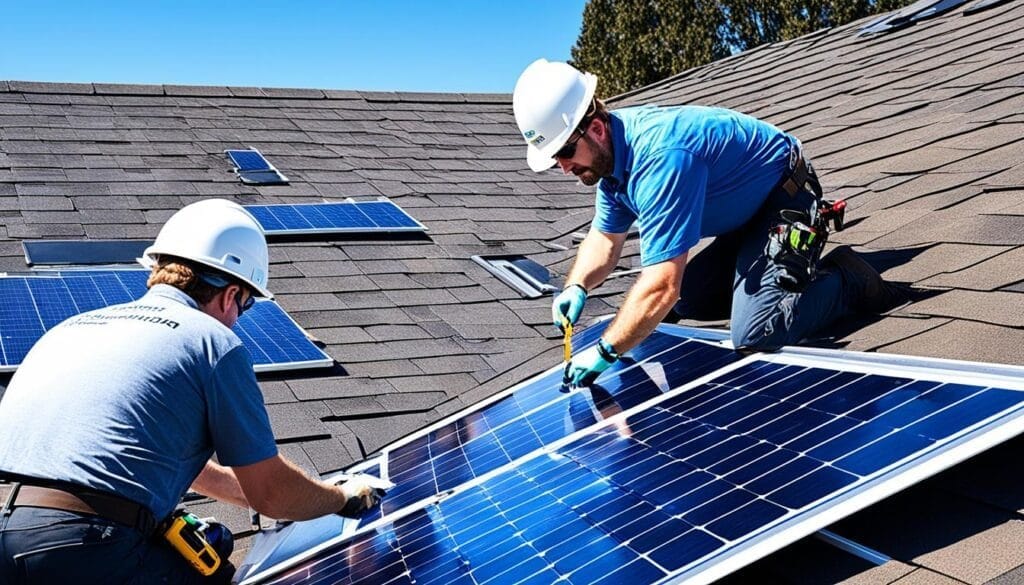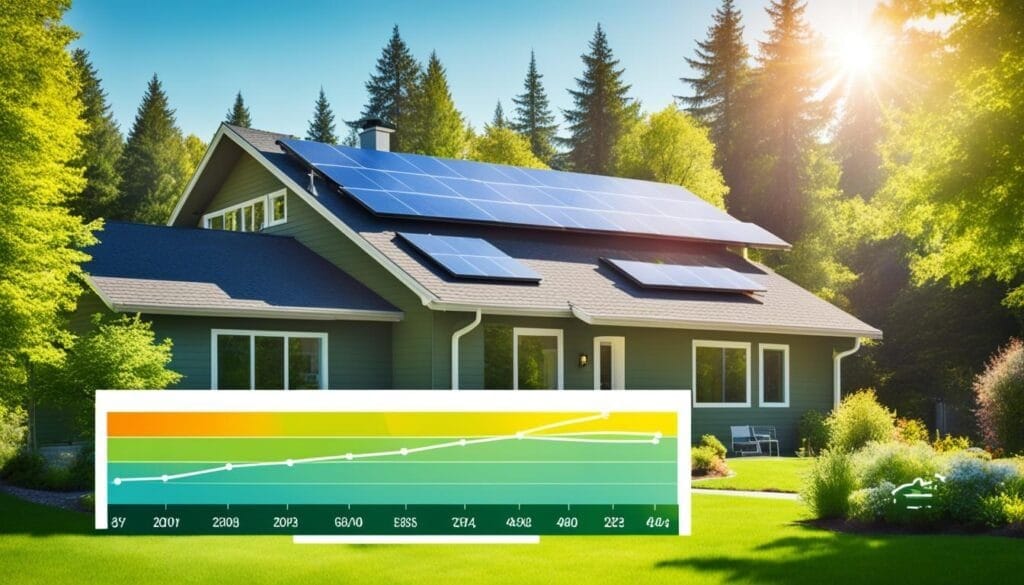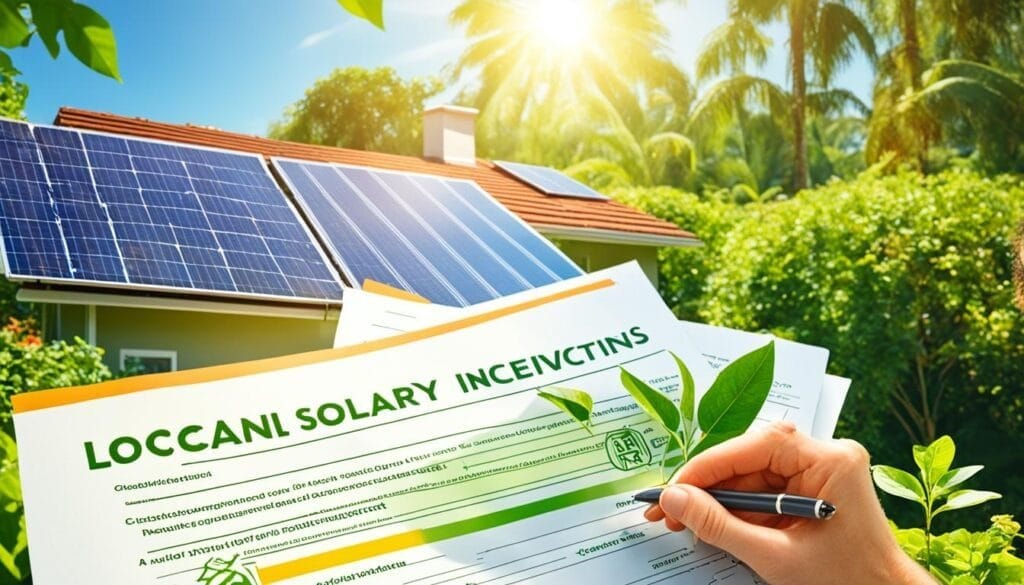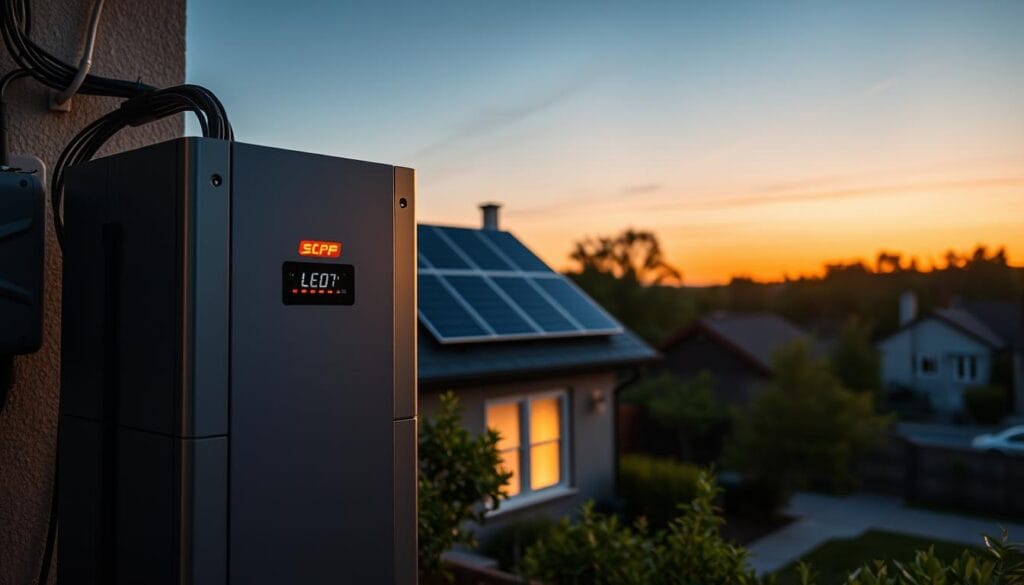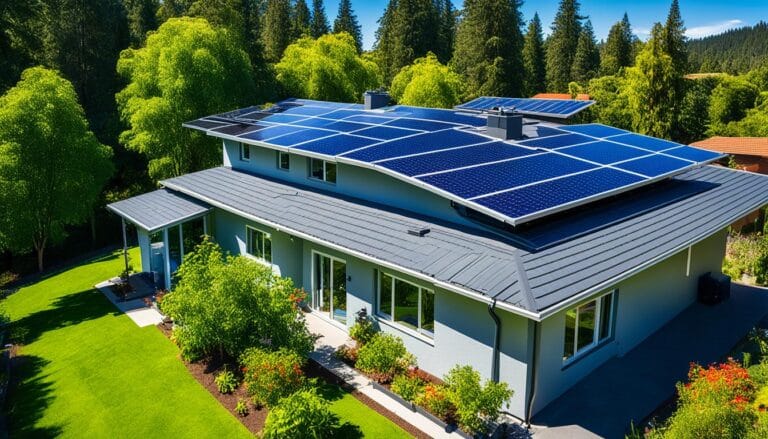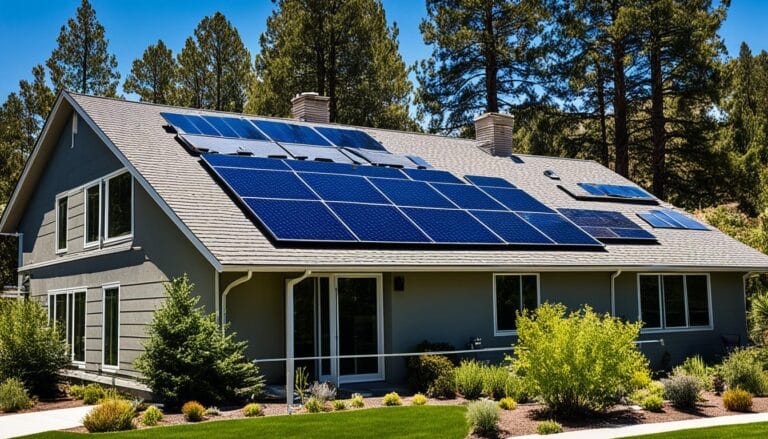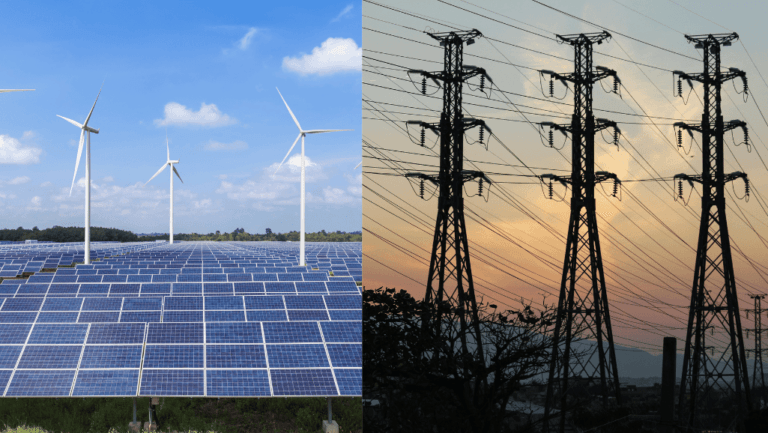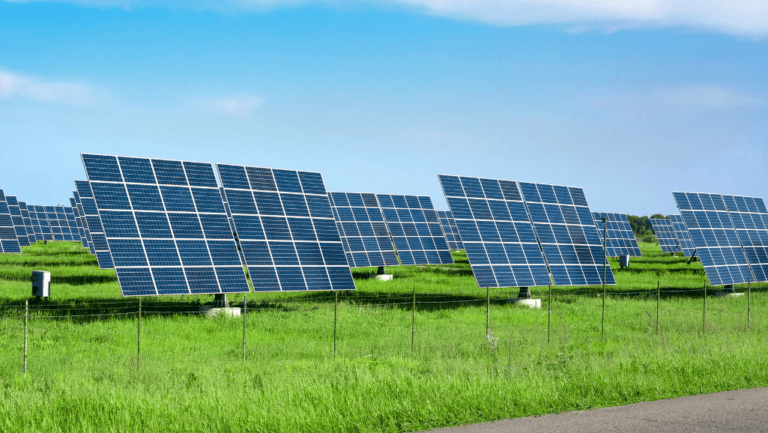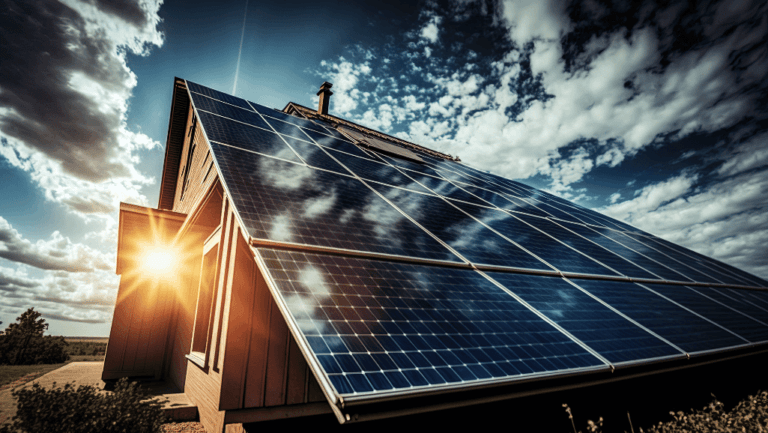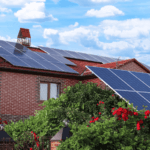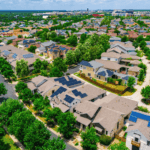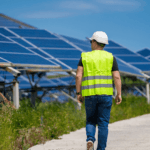Starting your clean energy journey begins at home — first, find out if your house qualifies for solar panels. Moving to solar power is more than a preference: it hinges on tax incentives, local rules, your home’s design, and whether your property gets enough sun. These factors determine residential solar panel approval and how well a solar system will perform for your home. Ready to check? Use the quick checklist below or jump to the home assessment section to make sure your roof and local rules line up for installation.
Key Takeaways
- does my house qualify for solar panels.
- Checklist: Verify sunlight, roof condition, and local permitting to assess solar panels qualifications.
- Money: The federal tax credit (ITC) can cut system costs — check current rates and eligibility.
- Timing: Confirm the ITC timeline and how state incentives stack with the federal credit.
- Production & savings: Estimate your potential energy production and possible reductions to your electricity bills.
- Financing: Explore financing options — loans, leases, or power purchase agreements — to find what fits your budget.
- Alternatives: If rooftop installation isn’t feasible, consider community solar or shared systems for access to clean energy.
Want a fast next step? Jump to the assessment section to run a roof check or contact a certified installer for a free site evaluation — it’s the easiest way to find out if does my house qualify for solar panels.
Understanding Solar Energy and Residential Eligibility
Before you decide to install solar panels, make sure your home is a good candidate. Residential eligibility depends on simple physical factors—sunlight, roof size and condition, and orientation—and on financial and legal factors like ownership, permitting, and available incentives. This section explains the core requirements so homeowners can answer the key question: is my home suitable for a rooftop solar system?
What Qualifies a Home for Solar Panel Installation?
To install solar, start by checking solar access: how many hours of direct sun your roof receives and whether nearby trees or structures cast shade. Measure usable roof area (a typical 5 kW system needs roughly 300–400 sq ft) to estimate how many panels you can fit. Ownership matters—if you lease your roof or sign a third‑party PPA, the tax incentives and some benefits may go to the system owner, not you.
Solar panels are durable—most manufacturers provide 25‑ to 30‑year performance warranties—so view the system as a long‑term investment. Before you move forward, make sure you understand financing options (loans, leases, PPAs) and whether you can claim credits or incentives.
Solar Energy Requirements for Residential Properties
Practical on‑site requirements include roof direction (south is ideal in the northern hemisphere), slope, structural soundness, and unobstructed solar access through most of the day. You’ll also need to confirm local building codes, HOA rules, and interconnection requirements with your utility. For the federal Investment Tax Credit (ITC), the system must be placed in service in the tax year you claim the credit—check the latest IRS guidance for current deadlines.
There are additional value streams such as net metering or selling Renewable Energy Certificates (RECs) in some markets. Note: selling RECs may transfer renewable attributes away from your household, so review program terms before selling credits.
If you still have questions, ask a certified installer for a site assessment. A professional can size the system, estimate annual production, and clarify permitting and incentive eligibility so you can decide whether to install solar panels or explore alternatives like community solar.
Evaluating Your Home’s Solar Potential
Learning how to assess your home for solar panel installation is the first step toward reliable solar energy. A focused site check—roof orientation, usable area, shading, and local sun resources—lets you estimate expected production and whether a rooftop solar system will meet your needs.
Assessing Roof Orientation and Angle for Optimal Solar Gain
Roof direction and tilt strongly influence annual output. In the northern hemisphere, a south-facing roof typically delivers the highest yield; east- or west-facing roofs are acceptable with some loss of production. The ideal tilt is often close to your latitude, but flatter or slightly steeper roofs still work with modern racking and panel technology.
Shading Factors and Their Impact on Solar Efficiency
Even small amounts of shade can reduce a system’s performance—shading on one panel may affect an entire string unless the system uses optimizers or microinverters. Observe sun paths through the day and across seasons to spot intermittent shading from trees or nearby structures. Tools like Google’s Project Sunroof and NREL’s PVWatts can estimate site insolation and expected annual production for your address.
Practical tip: a typical residential 5 kW system requires roughly 300–400 sq ft of usable roof and—depending on local sunlight—can produce about 5,000–7,500 kWh per year. Use local insolation data (NREL) to convert system size to expected kWh production in your area.
Below is a general guide showing how roof orientation and shading affect typical annual output (values are estimates—use PVWatts or a professional site assessment for precise figures):
| Roof OrientationSunlight ExposurePotential Energy Output (kWh)Impact of Shading (%) | |||
| South | High | 1200 – 1500 (per kW) | 20-30 |
| West/East | Moderate | 800 – 1000 (per kW) | 25-35 |
| North | Low | 500 – 700 (per kW) | 30-40 |
These ranges are illustrative; actual production depends on local climate, panel efficiency, system design, and inverter/optimizer choices. If you need a quick, reliable estimate, run your address through PVWatts or Project Sunroof or ask a local installer for a free production estimate.
Local Climate and Solar Panel Effectiveness
How well solar panels perform depends heavily on local climate. Sunlight availability, temperature ranges, and weather patterns all affect annual energy production and long‑term system durability. Understanding these regional differences helps you decide if rooftop solar is the right investment for your home.
Key climate factors:
- Sunlight hours and solar irradiance: More direct sunlight generally means higher annual production and bigger savings on electricity.
- Temperature: Panels produce slightly less power as temperature rises; cooler climates can see higher per‑panel efficiency.
- Weather extremes: Snow, hail, high winds, and dust can affect performance, maintenance needs, and mounting requirements.
Most manufacturers back panels with 25‑ to 30‑year performance warranties; however, expected useful life and production depend on local conditions and maintenance. Use regionally specific insolation data (NREL PVWatts) or local PV production maps to get realistic production estimates for your area.
Here’s a concise view of climate impacts and benefits:
| Climate FeatureImpact on Solar PanelsPotential Benefit | ||
| Extended Sunlight (high insolation) | Higher annual power production | Greater energy savings and faster payback |
| Lower Average Temperatures | Improved panel efficiency (less thermal loss) | Better year‑round output and longevity |
Practical checklist for climate readiness: check annual sunshine hours with PVWatts, confirm snow and wind loads with your installer, and plan seasonal maintenance for dust or leaf buildup. These steps help maximize the benefits of solar panels for your home and ensure the system delivers reliable power over time.
The Federal Solar Tax Credit: How It Benefits Homeowners
For many homeowners, the federal solar tax credit is the single largest incentive that lowers the upfront cost to install solar panels. Officially called the Investment Tax Credit (ITC), it directly reduces your federal tax liability by a percentage of the qualified solar system cost, making federal solar incentives an important part of the financial picture when you decide to install solar.
Understanding the Investment Tax Credit for Residential Solar
Current ITC guidance allows homeowners to claim a significant percentage of the system cost as a tax credit (confirm the exact percentage for the tax year you plan to install). The credit applies to qualified equipment and installation costs for systems placed in service on your U.S. residence. Important: if you lease your system or enter a third‑party Power Purchase Agreement (PPA), the tax credit is typically claimed by the system owner (the lessor), not the resident.
Eligibility Criteria for Claiming the Federal Solar Tax Credit
To claim the federal solar tax credit, you generally must:
- Be the taxpayer who owns the solar panels (ownership vs. lease matters).
- Have the system installed at your principal or secondary residence in the U.S.
- Place the system in service in the tax year you claim the credit (check current IRS rules and deadlines).
Always consult the current IRS guidance or a tax professional to confirm eligibility, documentation needed, and how the credit interacts with state incentives.
Here’s a simple view of how the ITC can affect system cost (use these as illustrative examples and verify with up‑to‑date cost data):
| Year of InstallationTax Credit RateAverage System Cost (Before Tax Credit)Average System Cost (After Tax Credit)Projected Annual Savings on Energy Bills | ||||
| 2022-2032 | 30% | $32,386 | $22,670 | $1,346 |
| 2033 | 26% | $32,386 | $23,966 | $1,346 |
| 2034 and beyond | Subject to renewal | TBD | TBD | TBD |
The table illustrates how the tax credit lowers the upfront cost of solar panels and improves payback, but you should check current national averages and regional pricing for a precise estimate. Sources like the IRS (for ITC rules) and industry reports (for average system costs) are the best places to confirm numbers.
How to claim the credit: keep invoices and proof of payment, confirm the system is placed in service in the correct tax year, and file the appropriate IRS forms (see current IRS instructions for residential energy credits). If you use financing, note that some loan structures or leases affect who can claim the credit, so clarify ownership up front.
Bottom line: the federal solar tax credit can significantly reduce the amount you pay out of pocket to install solar panels—making the investment more affordable and shortening the time until your system pays back in lower electricity bills. If you’re considering an installation, verify current ITC rules and combine that benefit with state and local incentives for the full savings picture.
State and Local Incentives for Residential Solar Panels
State and local incentives can significantly lower the upfront cost to install a residential solar system and improve your payback. Beyond the federal tax credit, many states and utilities offer rebates, property tax exemptions, net metering, and other programs that change the financial equation for solar panels.
Common types of state and local support include:
- Direct rebates that reduce installation costs at the point of purchase.
- Property tax exemptions that prevent your home’s assessed value from rising because of a solar installation.
- Net metering or crediting programs that compensate you for excess electricity you export to the grid.
- Local grants or low‑interest financing to help homeowners cover upfront costs.
Navigating State-Level Solar Incentives and Rebates
Incentives vary widely by state and utility. Use centralized databases (for example, the DSIRE database) to find current state rebates for solar energy and local programs. Some states—New Jersey, California, Massachusetts and others—offer particularly robust packages; local utilities may also run their own rebate or performance programs.
How Local Solar Policies Can Influence Your Eligibility
Local rules—zoning, permitting, interconnection agreements, and HOA guidelines—affect whether and how you can install panels. Net metering availability and the specific compensation rate are utility‑dependent and can materially affect savings. Also confirm whether an incentive requires you to retain Renewable Energy Certificates (RECs) or if selling them is part of the program rules.
| IncentiveImpactAvailability | ||
| Property Tax Exemptions | Reduces annual property taxes on increased home value due to solar installation. | Varies by state and county. |
| Net Metering Programs | Compensates homeowners for excess power generated, enhancing savings. | Dependent on local utility company policies. |
| Direct Rebates | Lowers upfront installation cost. | Offered by some utilities and state programs. |
| Federal Tax Credit | Reduces federal tax liability by a percentage of system cost. | Available federally; check current ITC rates and eligibility. |
How to find incentives in your area (quick steps): 1) Search your state on DSIRE for up‑to‑date listings; 2) check your local utility’s rooftop solar page for rebates and net metering terms; 3) ask potential installers—many include incentive lookups in their proposals. Combining state and local incentives with the federal solar tax credit often makes rooftop solar panels a much more affordable option than expected.
Financial Considerations for Solar Energy Investments
Starting a rooftop solar project requires clear financial planning. National averages change year to year, so get updated quotes, but understanding the main cost drivers and solar financing options helps you compare choices. Financing can make it possible to install solar panels with little or no upfront cash, while ownership (versus leasing) affects tax credits, savings, and long‑term value.
Common financing paths:
- Cash purchase — highest immediate cost but best long‑term ROI and full eligibility for incentives.
- Solar loan (secured or unsecured) — spreads the cost over time; secured loans often have lower rates but use collateral.
- HELOC / Home equity loan — can offer attractive fixed or variable rates if you have sufficient equity.
- Solar lease / PPA — low or zero upfront cost but typically the system owner (lessor) claims the federal tax credit and incentives.
Financial planning for solar panels means matching your budget to a financing option that preserves incentives and maximizes savings.
Estimates and payback examples depend on system size, local electricity rates, and incentives. As a rough illustration, a 5 kW residential system (typical for many U.S. homes) may cost between $15,000–$30,000 before incentives depending on region and equipment; after the federal tax credit (confirm current ITC percentage for your tax year) and state/local incentives, your net amount due can be substantially lower. Use a payback calculator or ask installers to show expected monthly loan payment versus current monthly bill to compare outcomes.
- Typical break-even: Many homeowners see payback in roughly 6–12 years depending on local rates and incentives (this varies widely by location and system size).
- Long-term savings: Over 20–25 years, a homeowner can save significantly on cumulative electric bills compared with grid purchases—installers often present 25‑year savings projections.
- Home value: Owning an installed solar system often increases home value; the exact uplift depends on local market preferences and whether the system is owned or leased.
Financing comparison table (high-level):
| Financing OptionInterest TypeRepayment TermKey Consideration | |||
| HELOC | Variable | Often 5–20 years | Flexible, uses home as collateral; payments may change with rates |
| Home Equity Loan | Fixed | 5–15 years | Predictable payments, also secured by home |
| Solar Loan (Unsecured) | Fixed or variable | 5–20 years | No home lien required; rates depend on credit |
| Solar Lease / PPA | N/A | 10–25 years | Low/no upfront cost; installer or lessor claims incentives |
Choose financing by comparing monthly payments to your current electric bill: a good outcome is monthly payments equal to or less than your typical electricity expense while retaining ownership benefits. For precise planning, ask installers for a side‑by‑side comparison showing:
- Upfront cost and incentives applied
- Monthly payment (loan/lease)
- Estimated monthly bill savings
- Break-even time and 20–25 year savings projection
Finally, check whether the proposed financing affects your eligibility for the federal tax credit and state incentives. If you plan to finance, ask your installer or tax advisor how ownership structure impacts who can claim credits and the total financial picture. Comparing offers and using a financing calculator will help you select the best option to install solar panels and maximize your investment over time.
House Qualifications for Solar Power: Structural Factors
Installing solar panels is a valuable upgrade, but it starts with confirming your home’s structural readiness. A safe, code‑compliant installation depends on roof condition, load capacity, and proper mounting — all of which affect performance and longevity of your solar panel system.
Evaluating the Condition of Your Roof for Solar Panel Mounting
Begin by assessing roof age, material, and overall condition. As a rule of thumb, many installers prefer roofs that are in good shape and won’t need replacement within 10–15 years; if your roof is older or showing wear, consider replacing it before installing panels. Measure usable roof area: a typical residential panel is roughly 18 sq ft, and modern arrays use several panels depending on system size.
Roof strength matters. A standard framed racking system adds only modest weight, but the roof and supporting framing must handle dead load (panels and racking) plus live loads (snow, maintenance) and environmental forces (wind, seismic). Verify roof decking, rafters, and flashing condition so mounting points are secure.
Load Bearing and Structural Integrity for Solar Installations
Structural checks should confirm that the building can safely support the array. Building codes and standards (IRC, IBC) and engineering guidelines (ASCE 7) define load combinations and design values used by engineers and installers. For certain roof types or older homes, a structural engineer may be required to provide a stamped report before permitting.
When to replace your roof before installing panels: if shingles are near the end of life, you have leaks, damaged flashing, excessive sagging, or the roof covering needs replacement within a few years — plan roof replacement first. Typical reroof costs vary by material and region; ask contractors for estimates and coordinate timing with your solar installer to avoid rework.
Practical next steps for homeowners: request a structural inspection from a licensed installer or engineer, ask for the racking weight per square foot, and get a written recommendation on whether roof work is needed. Taking these steps ensures safe, durable installations that let your home capture clean power for decades.
Does My House Qualify for Solar Panels?
Determining whether your house qualifies for solar panels is a practical process: review solar access, roof suitability, local climate, and get a professional assessment if needed. These checks show whether a rooftop system will produce enough energy to justify the investment.
Start with online tools and data: Google’s Project Sunroof can estimate rooftop solar potential for your address, and the National Renewable Energy Laboratory (NREL) provides regional insolation maps and PVWatts, a calculator that converts system size to expected annual kWh production. Use those resources to get an early sense of how many panels you might need and expected production.
| AspectDetailsImportance | ||
| Sunlight Exposure | Unobstructed solar access for the majority of the day maximizes production | Critical for expected energy output |
| Roof Orientation | South-facing is ideal in the northern hemisphere; east/west are workable; north is least efficient | Affects annual yield and number of panels required |
| Local Climate | Hours of direct sunlight and environmental factors (snow, dust, storms) influence efficiency and maintenance | Impacts long-term production and upkeep |
| Professional Assessment | Certified installers provide shading studies, system sizing, and permit guidance | Ensures a reliable installation and accurate production estimates |
Next steps (quick checklist):
- Run Project Sunroof or PVWatts for an address-level estimate.
- Measure usable roof area and count estimated panels (typical panel area ~18 sq ft).
- Check local incentives and net metering rules that affect savings.
- Ask installers these questions: expected annual kWh production, recommended system size, warranty details, and permit/interconnection timeline.
If you want an instant estimate, enter your ZIP code in a production calculator on a reputable solar site or contact a certified local installer for a free site visit. These steps help you make sure your property is a good candidate for solar and clarify how many panels and what system size you’ll likely need.
Community Solar Projects: An Alternative Path to Clean Energy
Community solar projects offer a practical way for homeowners, renters, and apartment dwellers to access the benefits of solar when rooftop installation isn’t possible. Instead of putting panels on your roof, you subscribe to or buy a share of a larger offsite solar array and receive credits or bill reductions based on your share of the production.
Key advantages of joining a community solar project include lower upfront cost and wider access to clean energy. Subscribers typically see savings on their electricity bills (commonly in the range of 5–20% depending on the program), and community solar expands participation to those who cannot host panels — renters, shaded homes, or properties with structural limits.
- Community solar increases access to renewable energy for more homes and communities.
- It allows participants to benefit from solar without rooftop installations or major investment.
If you’re considering community solar, here’s how to join and what to expect:
- Find local projects: search community-solar registries or ask your utility for program listings.
- Compare offers: review subscription terms, expected bill credits, contract length, and any exit or transfer rules.
- Sign an agreement: subscribe or buy a share; credits typically appear on your utility bill as a line item or discount.
Pros and cons at a glance:
| OptionEligibilityTypical SavingsOwnership | |||
| On-site rooftop solar | Requires suitable roof/ownership | High (depends on system size & incentives) | Owned by homeowner (if purchased) |
| Community solar | Open to renters and shaded homes | Moderate (subscription credits) | Owned by developer/operator; subscriber gets credits |
Community solar programs and capacity are expanding in many states; check local listings to see availability and program details in your area. If rooftop panels aren’t a fit for your property, community solar is a practical way to participate in the clean energy transition and still earn electricity savings.
Assessing My Home for Solar Panel Installation: The Process
Deciding whether to install solar begins with a thorough home solar assessment. You can perform a preliminary review yourself, but a professional site assessment provides the accuracy needed for system sizing, permitting, and incentive qualification. Below are the steps, what pros check, and a DIY checklist to get started.
Professional Solar Site Assessments and What They Entail
Certified installers and solar engineers perform comprehensive solar evaluations that typically include:
- Shading study — time‑of‑day and seasonal analysis using tools (aerial imagery, LiDAR) to quantify shading impact and expected annual production.
- Roof and structural inspection — deck condition, rafter spacing, load capacity and any recommended repairs; engineers may provide a stamped structural report if required for permits.
- Electrical review — existing service size, panel/breaker capacity, required upgrades, interconnection requirements with the utility, and inverter/optimizer selection.
- System sizing and production estimate — kW sizing, expected annual kWh (using PVWatts or equivalent), estimated offset of household electricity use, and performance assumptions.
- Permitting and interconnection guidance — identification of local permit requirements, HOA considerations, and utility interconnection procedures.
Many installers use tools like EagleView or similar aerial mapping services (Inform Advanced, PVsyst inputs) to produce high‑resolution site models for layout and production estimates. Note: a roof “under 10 years old” is a common installer preference (guideline) because most panels have 25‑ to 30‑year warranties; if your roof needs work soon, schedule replacement before installation.
DIY Checklist for Determining Solar Panel Suitability
If you prefer a preliminary, do‑it‑yourself assessment, use this simple checklist to determine if it’s worth requesting professional quotes:
- Check roof age and condition — note areas with damage, leaks, or prior repairs.
- Estimate usable roof area and orientation — measure or pace out unobstructed sections and note azimuth (south, east, west).
- Observe shading — watch the roof or use smartphone sun‑path apps to identify trees or structures that cast shade at different times of day.
- Review recent electric bills — calculate annual kWh usage to size a system that meaningfully offsets your consumption.
- Research local rules and incentives — check your utility’s net metering policy and state/local incentive listings.
- Confirm basic electrical capacity — look at your main service rating (e.g., 100A, 200A) on the meter/panel label to see if upgrades may be needed.
Comparing professional vs. DIY evaluation:
| AspectProfessional EvaluationDIY Evaluation | ||
| Shading Analysis | Advanced tools, precise mapping, quantified production impact | Basic observation, sun‑path apps, rough judgment |
| Roof Condition | Detailed inspection, structural recommendations | Visual check for obvious damage |
| Structural Assessment | Engineering analysis and stamped reports if needed | General guidance and cautionary checks |
| Permit and Regulations | Installer handles paperwork and interconnection | Self‑research local codes and HOA rules |
| Production Estimates | Modeled with PVWatts/PVsyst and site data | Rough estimates using online calculators |
Recommended scope for a professional assessment: a shading study, a structural check (or engineer’s stamp if your home is older or has an unusual roof), a detailed production model, and a written proposal showing equipment, warranties, incentives applied, and timeline.
Sample questions to ask an installer or evaluator:
- What is the expected annual kWh production and what percentage of my current usage will it offset?
- Which components and warranties are included (modules, inverters, racking)?
- Will permitting or structural engineering be required for my property?
- How do you handle interconnection and net metering with my utility?
- What financing options and incentive assumptions are included in the proposal?
For a final decision, get 2–3 professional quotes that include a site visit, production model, and a breakdown of costs and incentives. A professional assessment is the most reliable way to confirm whether to install solar panels on your home and to design a solar energy system that meets your needs.
Conclusion
Our review of solar panel suitability for my house shows that rooftop solar is a compelling option for many homeowners. The combination of federal incentives, declining equipment costs, state and local rebates, and a growing array of financing options makes it an attractive investment in clean energy. To get the most accurate picture for your home, verify current incentives and run a site assessment.
Key trends to consider:
- The federal solar tax credit (Investment Tax Credit) materially reduces the upfront cost to install solar panels; check current ITC percentages and IRS guidance for exact amounts and eligibility.
- State and utility incentives (rebates, net metering, property tax exemptions) can further lower your net amount due and shorten payback time.
- Solar systems have become more affordable over the past decade; combined incentives and falling equipment prices often make rooftop panels cost‑competitive with grid electricity.
Ready to take action? Here are three practical next steps:
- Run a quick address‑level estimate with tools like Project Sunroof or NREL’s PVWatts to check expected production.
- Get 2–3 professional quotes that include a site visit, estimated annual kWh production, all applicable incentives, and financing options.
- Compare monthly loan/lease payments to your current electricity bill and ask installers how ownership affects eligibility for the federal tax credit and state programs.
FAQ (short answers)
What Qualifies a Home for Solar Panel Installation?
What Are the Solar Energy Requirements for Residential Properties?
How Do Shading Factors Impact Solar Panel Efficiency?
What Is the Investment Tax Credit and How Do Homeowners Benefit?
How Can State Incentives and Net Metering Affect My Installation?
Can I Assess My Home for Solar Suitability on My Own?
Final note: solar panels can lower your electricity costs, increase property value, and reduce reliance on the grid, but outcomes depend on location, system sizing, incentives, and ownership structure. For the clearest path forward, request a free site assessment from certified installers who can model your expected savings, clarify the tax credit impact, and present financing options tailored to your situation.


